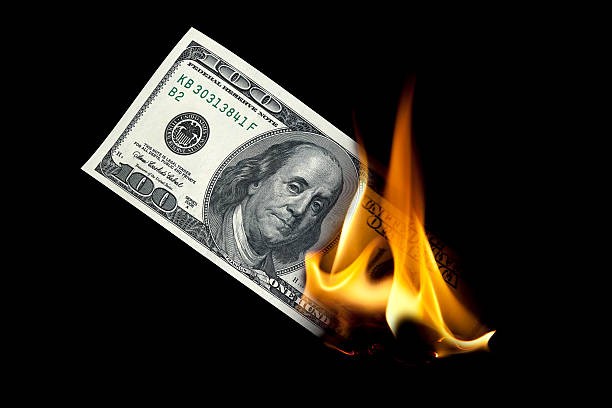 |
| The US dollar is known as the “king of currencies” and gives the US considerable power over other economies . (Source: iStock) |
In addition, rising interest rates along with the recent debt ceiling crisis in the US have raised concerns among other countries about their dollar debt and the collapse of the currency if the world's leading economy defaults.
BRICS efforts to move away from USD
With 88% of international transactions conducted in USD and the greenback holding 58% of global foreign exchange reserves, the global dominance of this currency is undeniable. However, the issue of de-dollarization or reducing the economy's dependence on the greenback in international trade and finance has been accelerated after Russia's special military campaign.
The BRICS countries have been pursuing a series of initiatives to reduce their dependence on the US dollar.
Over the past year, Russia, China and Brazil have increasingly used currencies other than the greenback in cross-border transactions, while Iraq, Saudi Arabia and the United Arab Emirates are actively exploring alternatives to the U.S. currency.
Russian officials have advocated de-dollarization to ease the pain of Western sanctions. Because of the sanctions, Russian banks cannot use SWIFT, the global messaging system that allows banking transactions. Last year, the West froze $330 billion in Russian reserves.
In April 2023, during an official visit to China, Brazilian President Luiz Inácio Lula da Silva also criticized the use of the US dollar in global trade.
At the same time, he stressed that the New Development Bank (NDB) needs to have its own currency to finance trade transactions between Brazil and other members of the bloc.
The Chinese government has also made clear its concerns about the dominance of the US dollar, declaring that the currency is “the main source of instability and uncertainty in the world economy.”
New currency ambitions yet to materialize
Since its inception, BRICS has been actively promoting trade between countries in the bloc using their own currencies. Therefore, if BRICS countries continue with their plans and create a new currency, it could help stabilize the economy and improve customer confidence in investments from countries in the bloc. This would help increase spending and economic development.
At the same time, the exchange rate fluctuations of local currencies against the Euro and the USD have been a significant obstacle for BRICS countries in recent years. In 2022, the USD depreciated against the Ruble and the Real. While the Euro has depreciated against all BRICS currencies.
Member countries want to promote the use of domestic currencies in bilateral trade to create a safe economic environment. By adopting a single currency, countries can limit their sensitivity to currency fluctuations and interest rate changes, thereby improving economic stability and reducing the likelihood of financial crises.
Additionally, the concept of a single currency has the potential to become a global alternative to the US dollar and is a direct threat to the greenback.
The US dollar is known as the “king of currencies” and gives the US considerable power over other economies. In fact, the US has a history of using sanctions to achieve its foreign policy goals. However, not all countries agree with US regulations, so Russia and China want to end the US dollar’s hegemony.
On Fortune, author Mihaela Papa commented that de-dollarization efforts are facing difficulties at both the multilateral and bilateral levels.
In 2014, when the BRICS countries launched the NDB, the bank’s founding agreement specified that operations could be financed in local currencies. However, as of 2023, the bank remains heavily dependent on the US dollar for its survival.
Similar challenges exist in pursuing de-dollarization of bilateral trade. Russia and India, for example, have sought to develop a local currency trading mechanism that would allow New Delhi’s importers to pay for Moscow’s cheap oil and coal in rupees. However, that idea has yet to materialize.
Source



























![[Photo] National Assembly Chairman attends the seminar "Building and operating an international financial center and recommendations for Vietnam"](https://vphoto.vietnam.vn/thumb/1200x675/vietnam/resource/IMAGE/2025/7/28/76393436936e457db31ec84433289f72)









































































Comment (0)